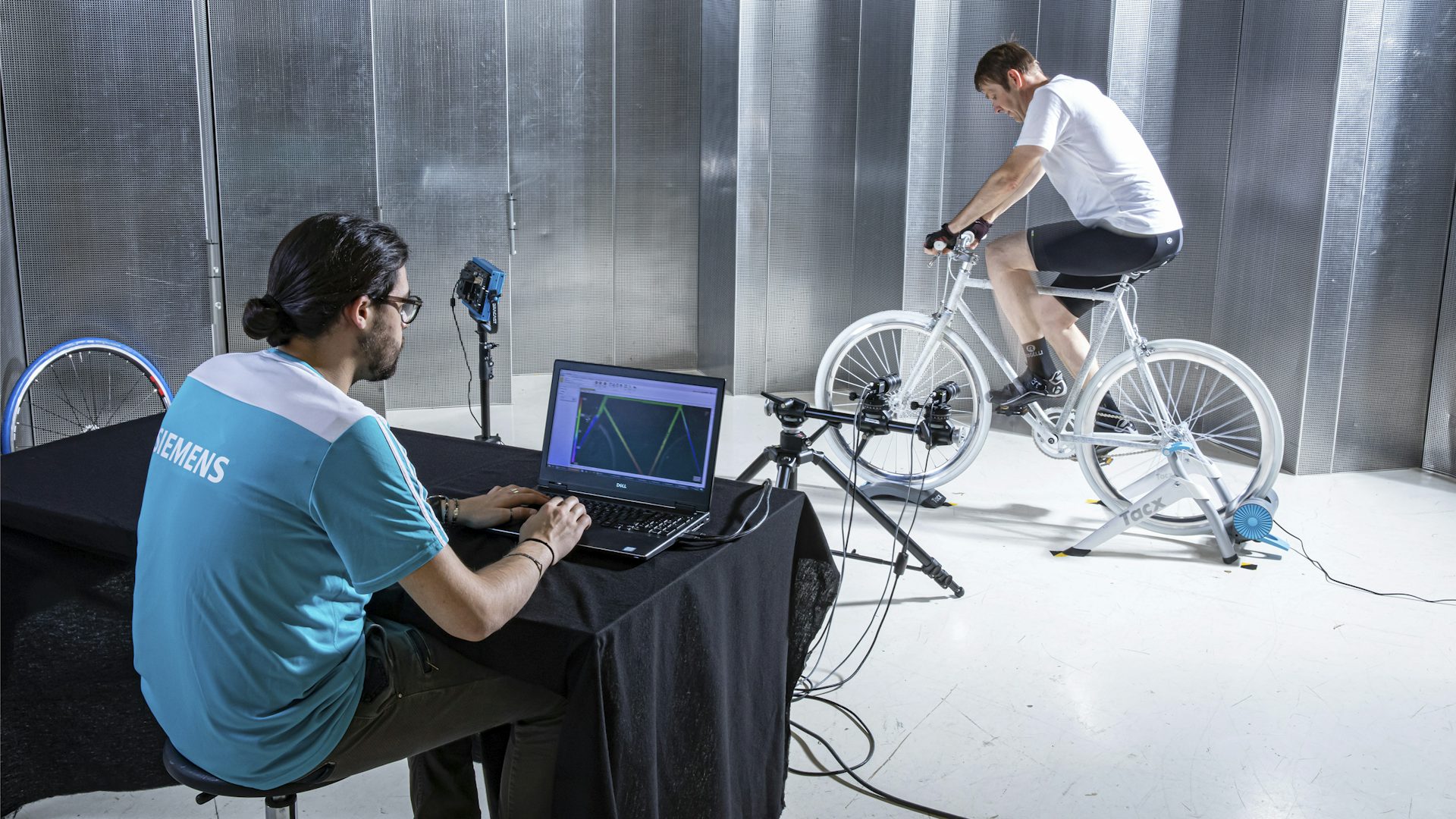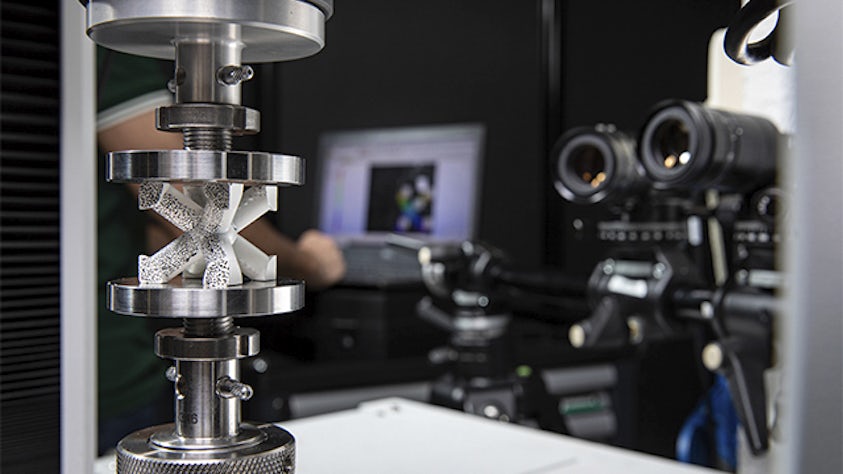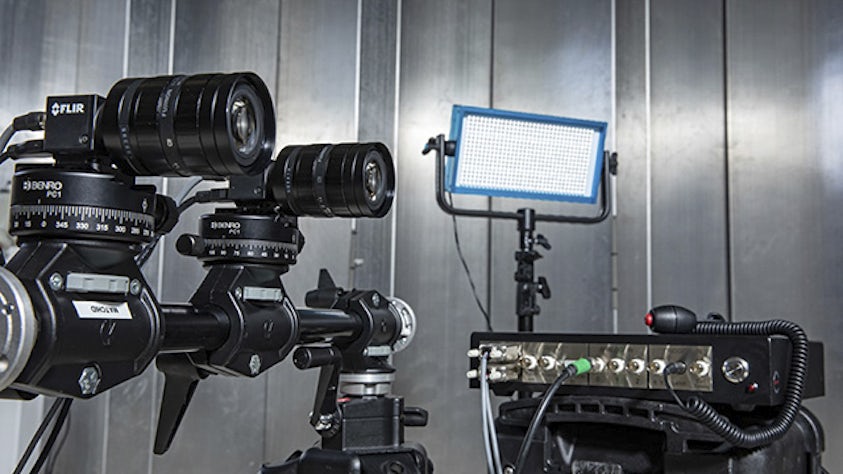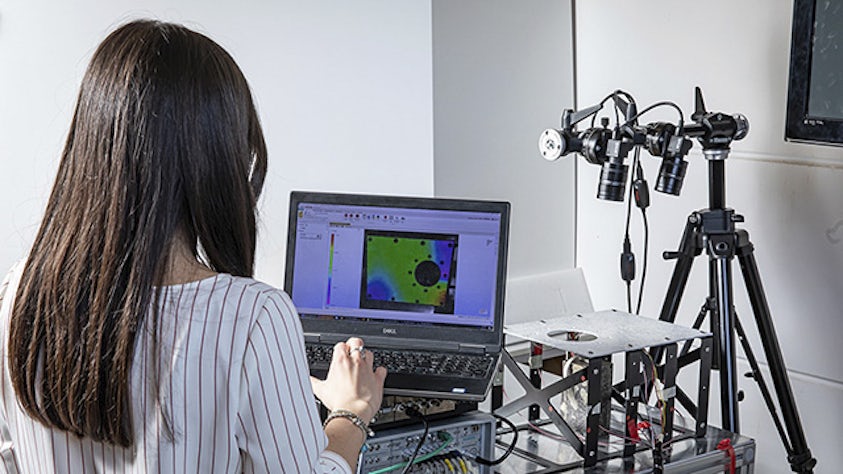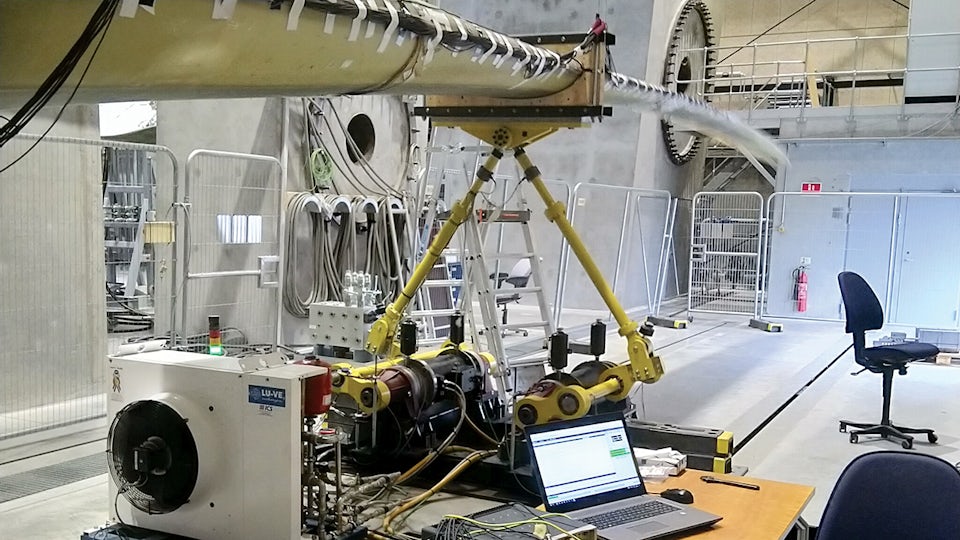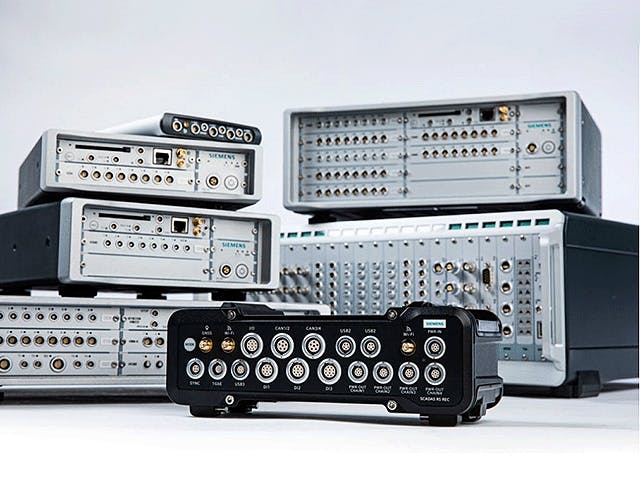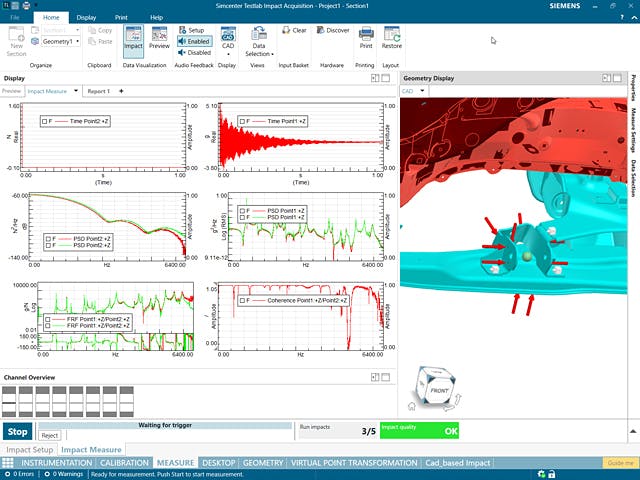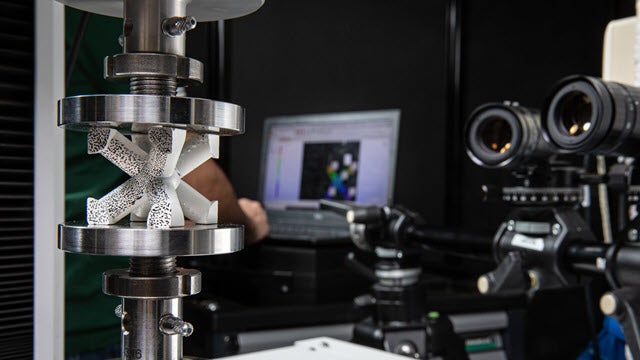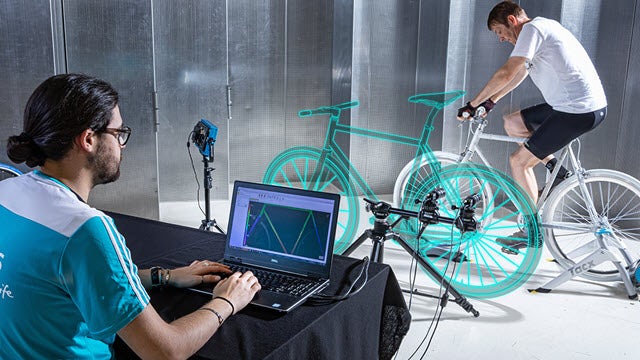Digital image correlation (DIC) is a non-contact optical measurement technique to measure 3D full-field displacement, strain, and acceleration using images from digital cameras. Digital image correlation has revolutionized engineering measurements and has evolved from university curiosity towards an industrially accepted technique.
It can be used with many tests, including tensile, torsion, bending and combined loading in materials engineering. It can also be used in structural testing for both static and dynamic applications.
Our solution embeds the latest tracking and image registration technology for 3D full-field measurement based on changes in images. Behind the nice colorful images, you will find accurate, reliable, and quantitative 3D full-field data everywhere, easily matched to the results of 3D finite element analysis. Compared to point measurements with sensors, DIC provides many more insights with limited instrumentation time. These results are used to accurately identify mechanical properties of new and innovative materials, to increase the accuracy and reliability of simulation models based on quantified results, and to accelerate component and system structural validation testing enabling faster and more responsive development cycles.
Characterize materials and structures with DIC
Learn how characterizing the mechanical behavior of materials and structures under load is a key enabler for improving designs and developing high-performance products.
